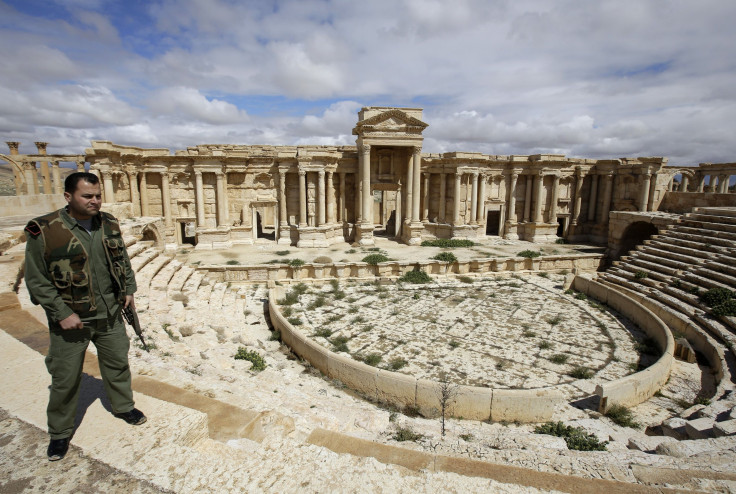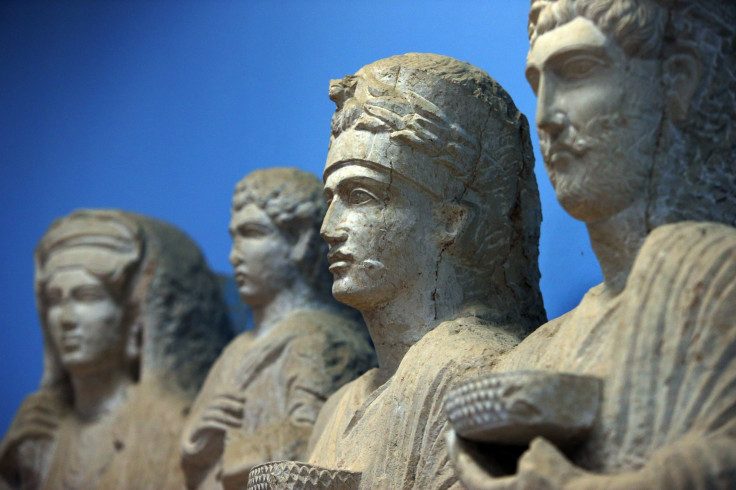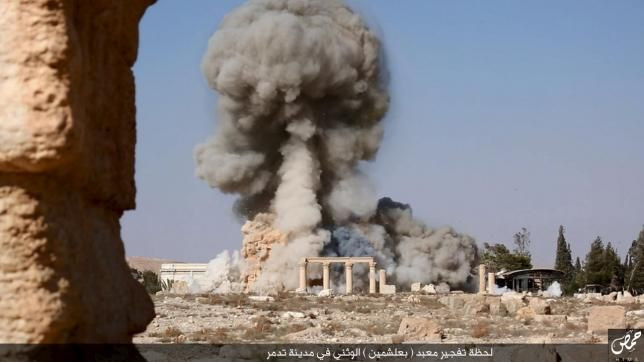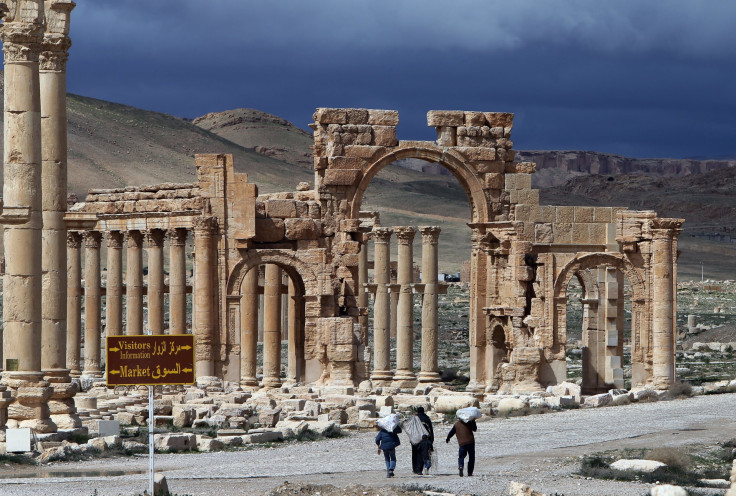ISIS In Palmyra Update 2015: After Arch Of Triumph Destruction, Syrian Archaeologists Risk Lives For Preservation, Protect Antiquities From Black Market

The ancient city of Palmyra, Syria, was once the crossroads of several of the most important ancient civilizations in human history. Sitting near a lush oasis along a trade route, the city known as Venice of the Sands became a thriving hub where people from the ancient Greek, Roman and Persian empires met and traded goods. After the Islamic State group, also known as ISIS, destroyed the 2,000 year-old Arch of Triumph Sunday, in the latest act of violence against the UNESCO world heritage site, archeologists and historians renewed the call for international agencies to intervene in preventing future losses, fearing that continued looting and black market sale of relics would drain the ancient site until it all but disappeared.
ISIS took control of Palmyra in May and immediately destroyed several hundred priceless antiquities along with several of the oldest and most cherished ancient temples in the region. Losses since may include the Elahbel Tomb, Baal Shamin Temple, Temple of Bel, the Valley of the Tombs, as well as numerous statues and artifacts, most of which date from the first or second century AD.
ISIS has taken over vast swaths of Iraq and Syria in an attempt to impose Islamic law, and their destruction of antiquities and ancient religious sites in Palmyra has been part of their war on apostasy, or heretical beliefs. The group said they destroyed the statues and relics because they represented false gods. The loss represented in the destroyed relics of Palmyra is more than a casualty of ideological warfare, however: The destruction symbolizes ISIS' war on pluralism of any kind, according to some historians.

“[The temple] captures what Palmyra stood for, which was a cosmopolitan culture that celebrated difference,” one Islamic art expert told the International Business Times after the destruction of one of Palmyra's temples. “Often times we talk about how [a place] is the heritage of the world. When we talk about Palmyra, that’s really true," said Stephennie Mulder, an associate professor of Islamic art and architecture at the University of Texas at Austin.
Palmyra has not lacked champions, and several heroic preservationists risked their lives to preserve some of the pieces of history once held at Palmyra's museum. A group of local men, including the son of Palmyra's museum director who was later beheaded by ISIS, banded together to save some 400 artifacts as militants rapidly approached the city in May, BBC reported Monday.
Khalil Hariri and Mohammed al-Assad (son of executed museum director Khaled al-Assad) told the BBC how they used several trucks to smuggle the artifacts out of the city after they had heard talk of ISIS' rapid approach. Hariri described how they were fired upon as they loaded the last truck, with militants only a few hundred yards away from them. Hariri was separated from his wife and child ruing the siege and barely escaped with his life.

The local Syrians who smuggled some of the objects out of Palmyra before it fell to ISIS were dubbed Syria's "Monuments Men," named for the 2014 movie that memorialized the true story of several soldiers during World War II who helped steal and preserve European art as Adolf Hitler's army approached from the East. Palmyra's plight has often been compared to the ransacking of European art led by the Nazis, though ISIS' looting has so far not been nearly as systematic as Hitler's.
Other preservation efforts include the calls from several non-profits and international organizations around the world that have sought to institute public policy that would rescue some of the remaining artifacts. The United Nations and UNESCO in particular have been vocal in their lament over Palmyra.

Not just limited to the simple destruction of artifacts, ISIS has been reportedly stealing some of the less easily traced artifacts to sell on the black market. The United Nations described how the looting had become part of a planned business to fund the group, saying it was happening “on an industrial scale.” ISIS has earned in excess of $36 million by selling stolen antiquities on the black market, according to the Los Angeles Times.
Some of the antiquities have already shown up in London, and historians expect to see objects on auction in major galleries in art capitals such as Paris, Berlin and New York within the next few decades, according to a Vice report.
"In a surprisingly small number of steps, you can go from the looter in ISIS-controlled territory to the smuggler who gets it out of the country... to a gallery owner who provides forged documentation" one black market specialist told CBS news.

Even if the destruction of Palmyra is stopped immediately, the objects lost will likely be gone forever, or will sit on the shelves of rich collectors who purchased them from black market sales, according to art experts. The actions of a handful of "Monuments Men," no matter how honorable, will not be enough to stop the advance of ISIS.
© Copyright IBTimes 2024. All rights reserved.






















